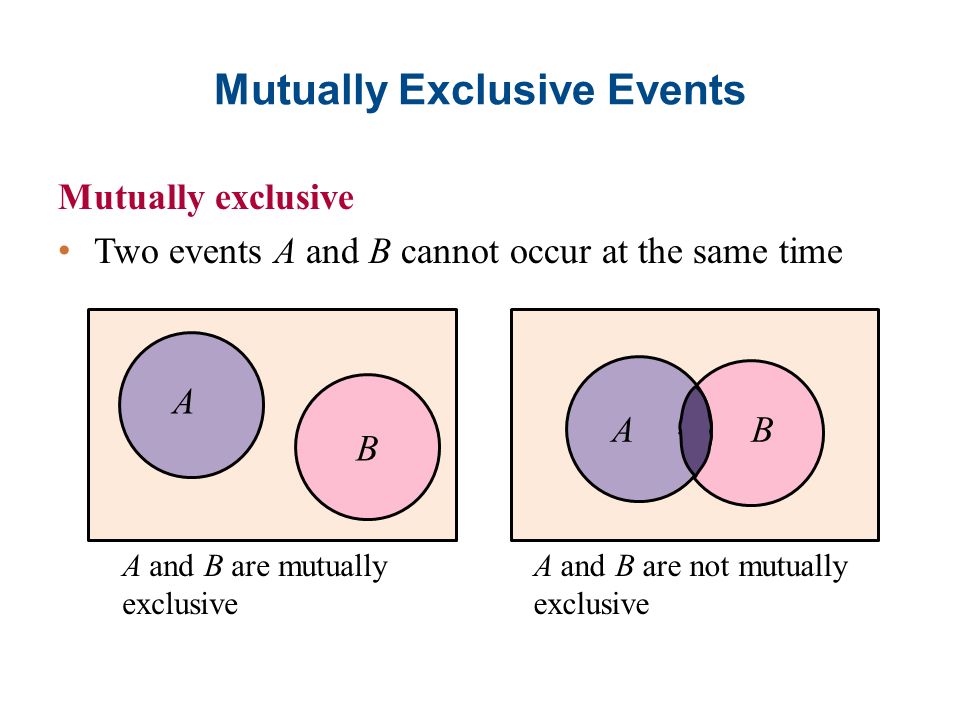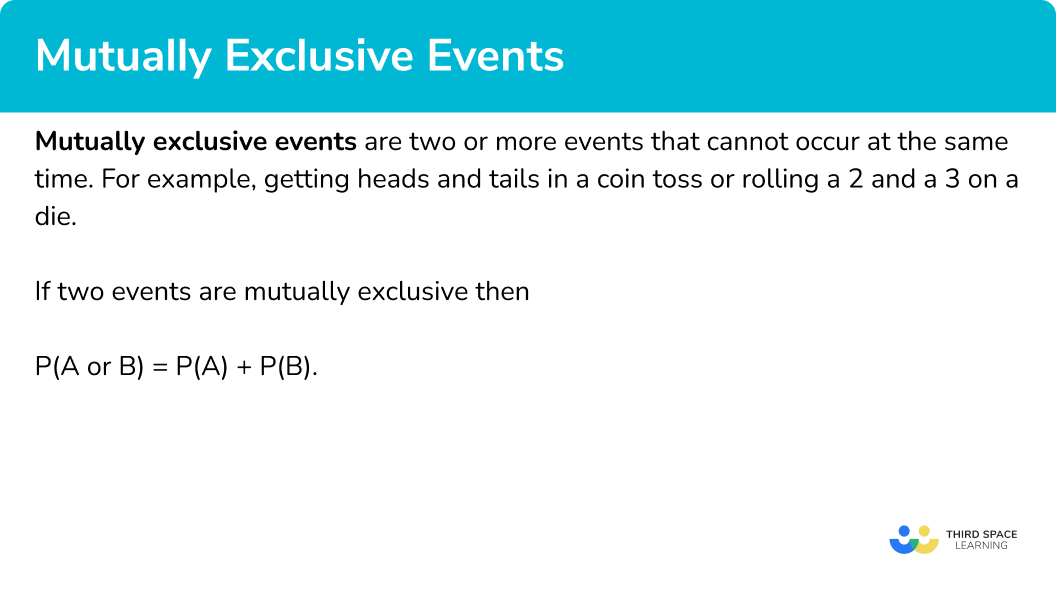Mutually Exclusive Math
Mutually Exclusive Math - Two events e and f are said to be mutually exclusive if they do not intersect: Learn what mutually exclusive events are in probability theory, how to find them, and how to calculate their probabilities. E \(\cap\) f = \(\varnothing\).
Learn what mutually exclusive events are in probability theory, how to find them, and how to calculate their probabilities. E \(\cap\) f = \(\varnothing\). Two events e and f are said to be mutually exclusive if they do not intersect:
Two events e and f are said to be mutually exclusive if they do not intersect: E \(\cap\) f = \(\varnothing\). Learn what mutually exclusive events are in probability theory, how to find them, and how to calculate their probabilities.
Grade 12 Applied Math (pilot curriculum) Mutually Exclusive/Mutually
E \(\cap\) f = \(\varnothing\). Two events e and f are said to be mutually exclusive if they do not intersect: Learn what mutually exclusive events are in probability theory, how to find them, and how to calculate their probabilities.
Probability of Mutually Exclusive Events (Simplifying Math) YouTube
E \(\cap\) f = \(\varnothing\). Learn what mutually exclusive events are in probability theory, how to find them, and how to calculate their probabilities. Two events e and f are said to be mutually exclusive if they do not intersect:
MECE Principle The Ultimate Guide to MECE Frameworks (2023)
E \(\cap\) f = \(\varnothing\). Learn what mutually exclusive events are in probability theory, how to find them, and how to calculate their probabilities. Two events e and f are said to be mutually exclusive if they do not intersect:
Mutually Exclusive Events GCSE Maths Steps & Examples
Two events e and f are said to be mutually exclusive if they do not intersect: Learn what mutually exclusive events are in probability theory, how to find them, and how to calculate their probabilities. E \(\cap\) f = \(\varnothing\).
Mathematics 10 Q3 Mod30 Probability Of Mutually Exclusive And Not
Learn what mutually exclusive events are in probability theory, how to find them, and how to calculate their probabilities. Two events e and f are said to be mutually exclusive if they do not intersect: E \(\cap\) f = \(\varnothing\).
The Meaning of Mutually Exclusive in Statistics
E \(\cap\) f = \(\varnothing\). Learn what mutually exclusive events are in probability theory, how to find them, and how to calculate their probabilities. Two events e and f are said to be mutually exclusive if they do not intersect:
Probability of Mutually Exclusive Events With Venn Diagrams YouTube
E \(\cap\) f = \(\varnothing\). Two events e and f are said to be mutually exclusive if they do not intersect: Learn what mutually exclusive events are in probability theory, how to find them, and how to calculate their probabilities.
Mutually Exclusive Probability Definition
Learn what mutually exclusive events are in probability theory, how to find them, and how to calculate their probabilities. Two events e and f are said to be mutually exclusive if they do not intersect: E \(\cap\) f = \(\varnothing\).
Mutually Exclusive Events GCSE Maths Steps & Examples
Learn what mutually exclusive events are in probability theory, how to find them, and how to calculate their probabilities. Two events e and f are said to be mutually exclusive if they do not intersect: E \(\cap\) f = \(\varnothing\).
PPT Addition Rule PowerPoint Presentation, free download ID3087295
Two events e and f are said to be mutually exclusive if they do not intersect: Learn what mutually exclusive events are in probability theory, how to find them, and how to calculate their probabilities. E \(\cap\) f = \(\varnothing\).
E \(\Cap\) F = \(\Varnothing\).
Two events e and f are said to be mutually exclusive if they do not intersect: Learn what mutually exclusive events are in probability theory, how to find them, and how to calculate their probabilities.
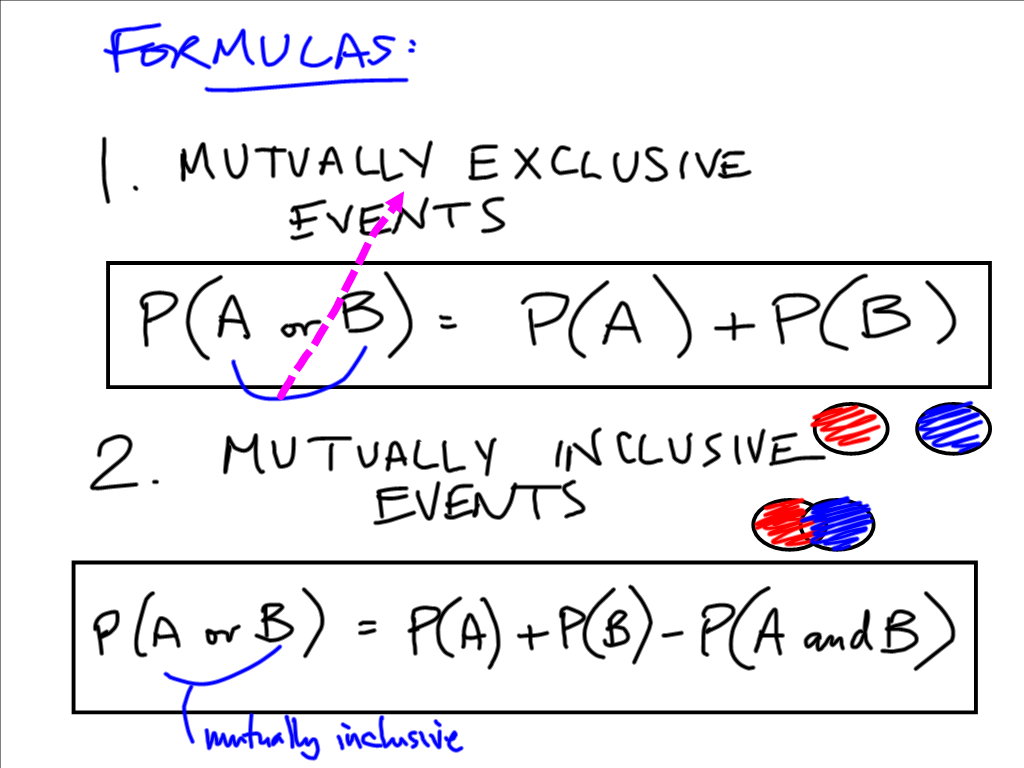


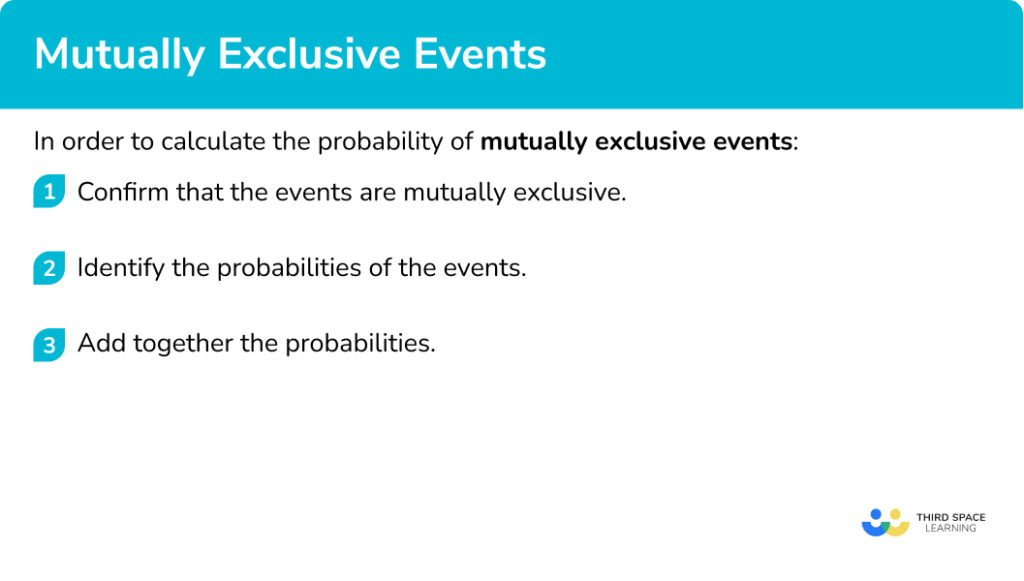
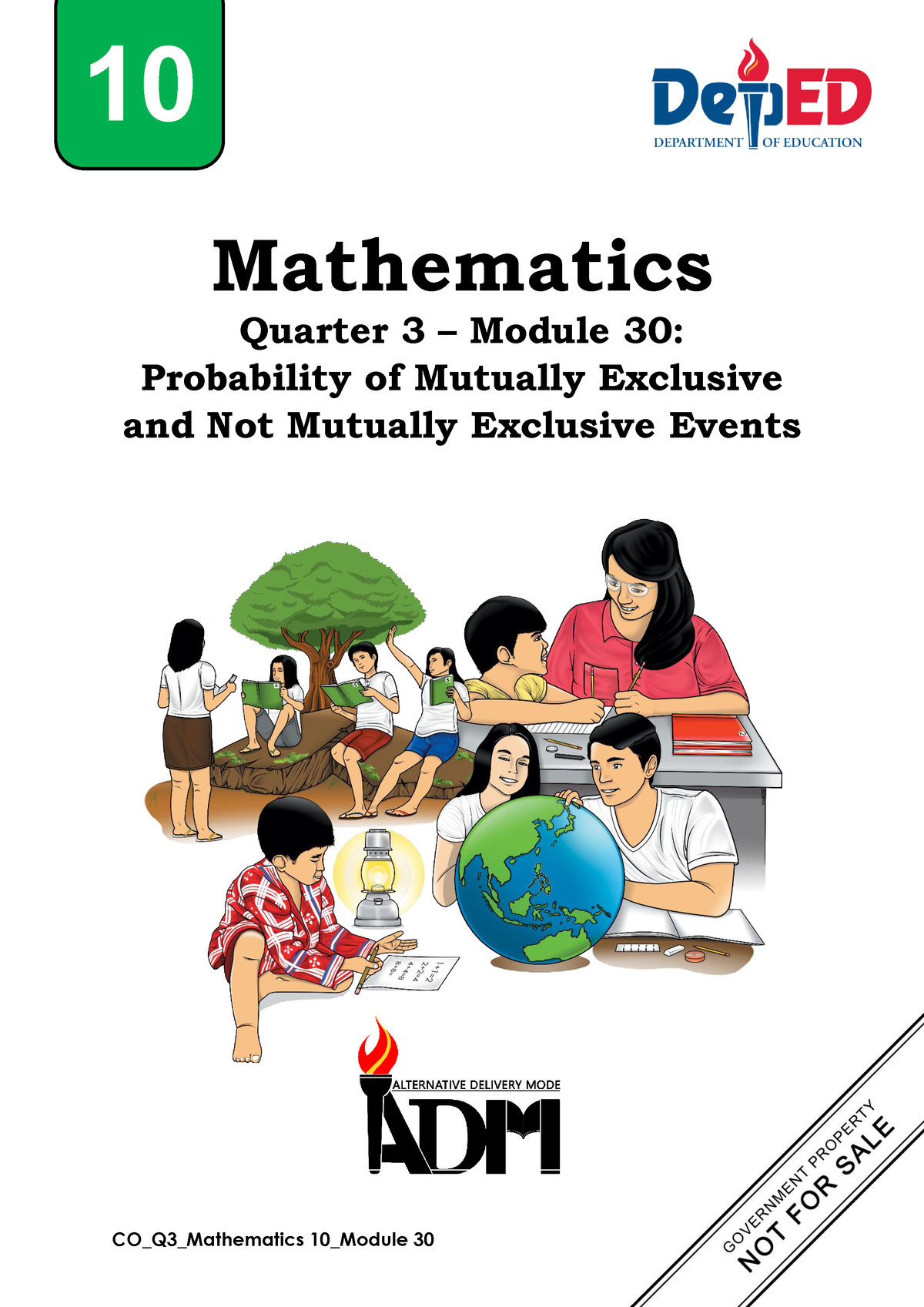
/mutually-56b749655f9b5829f8380e1f.jpg)

